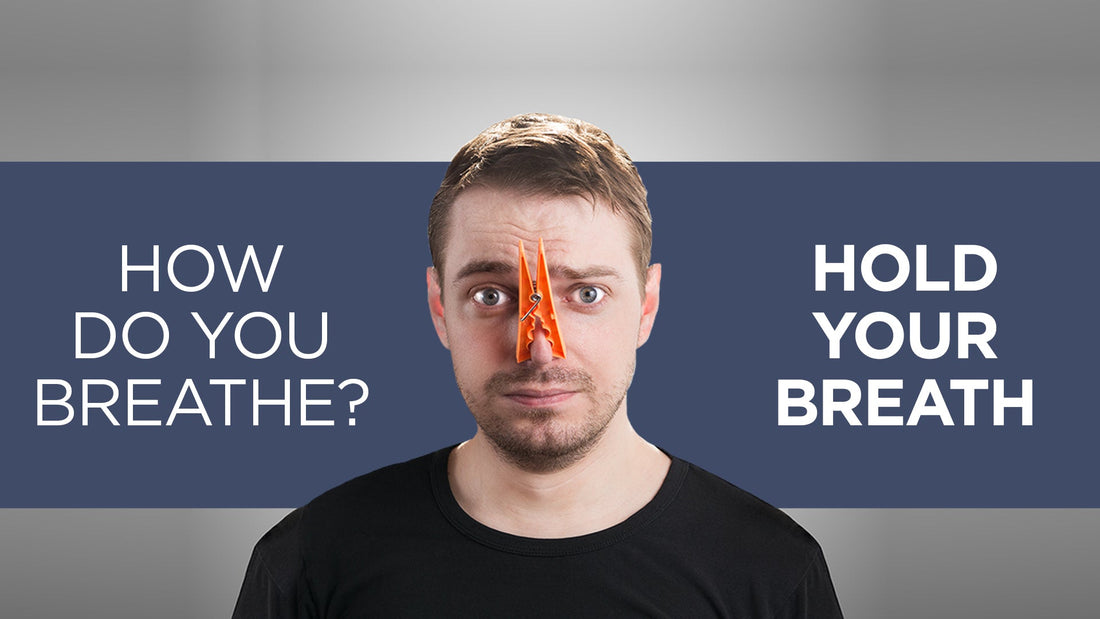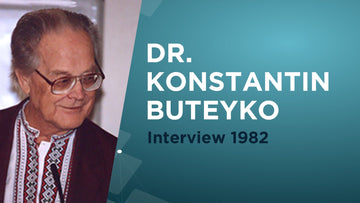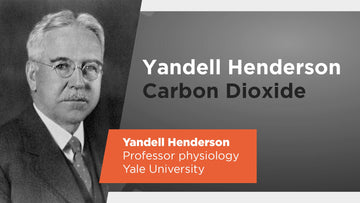
Breathing Test – Hold Your Breath
The two exercises below are about holding your breath. How long you can hold your breath, after exhalation, is an indication of your health status. The shorter the time you can hold your breath, the poorer your health. You will notice that your ability to hold your breath increases when you relax, not when you tense up. The exercises and the table below were developed by Konstantin Buteyko, the Russian MD and professor who spent fifty years of his life helping tens of thousands of people to improve their breathing.
Exercise 1 – Hold your breath while sitting

NOTE! Your mouth shall remain closed during the entire exercise.
- Step 1. Sit down in an upright position, with your back straight, and relax for a couple of minutes. Take a small breath in and a small breath out, in a calm way through your nose (approx. 2-3 seconds on inhalation and approx. 2-3 seconds on exhalation.)
- Step 2. Pinch your nose after the exhalation is finished and hold your breath and start the timer.
- Step 3. When you feel the first urge to breathe, let go of your nose, stop the timer and breathe in and out calmly through your nose, in the same way as in step 1.
If you are inhaling forcefully in step 3 you have held your breath for too long, which is quite common in today’s society where a lot of focus is placed on performing. When you feel the urge to breathe in step 3, you may experience swallow reflexes or feel that your diaphragm is pushed down involuntarily. When this occurs it is time to stop the timer and note the number of seconds. Scroll down to interpret your result.
Exercise 2 – Hold your breath while walking
NOTE! Your mouth shall remain closed during the entire exercise.

- Step 1. Sit down in an upright position, with your back straight, and relax for a few minutes.
- Step 2. Stand up and take a small breath in and a small breath out in a calm way through your nose (approx. 2-3 seconds on inhalation and approx. 2-3 seconds on exhalation).
- Step 3. Pinch your nose after the exhalation is finished and hold your breath and start walking while counting the number of steps you take.
- Step 4. When you are not able to hold your breath any longer, let go of your nose, inhale and exhale calmly through your nose and note how many steps you took. Try to wind down by breathing calmly as soon as possible.
The connection between our breath holding ability and our health status
These two exercises help you to assess how good or poor your breathing patterns are, along with how well you are able to tolerate carbon dioxide. You can learn more about how it works in the article, Carbon Dioxide Pressure More Important than Blood Pressure.
In addition, it should be noted that it is possible to increase your ability to hold your breath through training. Therefore, if you are a free diver or have sleep apnea (holding your breath at night) the results of doing the two exercises will most likely not be accurate.
| Health status | Hold breath sitting | Hold breath walking |
|---|---|---|
| No symptoms, optimum health | 60 seconds | 120+ steps |
| Very good health, most symptoms are completely gone | 40 seconds | 80-100 steps |
| Good health, symptoms present when exposed to a trigger | 30 seconds | 60-80 steps |
| Symptoms are often present | 20 seconds | 40-60 steps |
| Many different symptoms always present | 10 seconds | 20-40 steps |
| Medications, diseases, very heavy breathing | 3-5 seconds | 10-20 steps |
| Dead | 0 seconds | 0 steps |
Improve your breathing now
Any quest for enhanced health and wellbeing should include improving your breathing habits as a basic component since breathing is an integral part of us and is with us wherever we go. While good breathing in our daily lives doesn’t always come naturally, it can be learned. By improving your breathing habits, there is a great chance that you will also improve your energy levels, sleep quality, and overall health.
To assist you in improving your breathing habits, our 28-Day Conscious Breathing Retraining Program (in pdf-format) ![]() is of great help. The aim of the program is to support you in using the four tools of Conscious Breathing:
is of great help. The aim of the program is to support you in using the four tools of Conscious Breathing:
- Become aware of your breathing. Awareness is usually the first step towards change. The first step of this seven-step program is, therefore, to check your breathing by answering the 20 questions in the Health and Breathing Index.
- Tape your mouth at night. Many of us sleep with an open mouth, which automatically means that your breathing will exceed your body’s needs, i.e., we create an imbalance between oxygen (too much) and carbon dioxide (too little). Taping your mouth at night with Sleep Tape is a remarkably simple and inexpensive way to ensure that your mouth stays closed and respiration occurs only through your nose. Nasal breathing promotes a relaxed sleep and minimum energy leakage, which increases the chances that your body can heal, repair, and regenerate.
- Train with the Relaxator. With The Relaxator Breathing Retrainer, you can retrain your breathing habits so that they are more in line with your body's needs. The Relaxator helps you achieve a slow, low, and more rhythmical breath. It also increases the muscle tonus in the upper airways and strengthens the diaphragm, our most important breathing muscle.
- Physical activity with a closed mouth. Good breathing starts in the nose. If your nose is narrow and you find it hard to breathe through it, it is often a sign that your breathing is not optimal. In the nose, under the nasal turbinates, there is erectile tissue. They swell when the CO2-pressure in our body is too low, as a defense mechanism to maintain an optimal carbon dioxide pressure. Carbon dioxide is produced in the body, and virtually all carbon dioxide leaves the body through exhalation. Physical activity with a closed mouth increases your ability to breathe through your nose. As your breathing improves and you regain an optimum carbon dioxide pressure, the erectile tissue will decrease in size and the inside of the nose will feel less crowded. Read more on how to unblock a stuffy nose.







